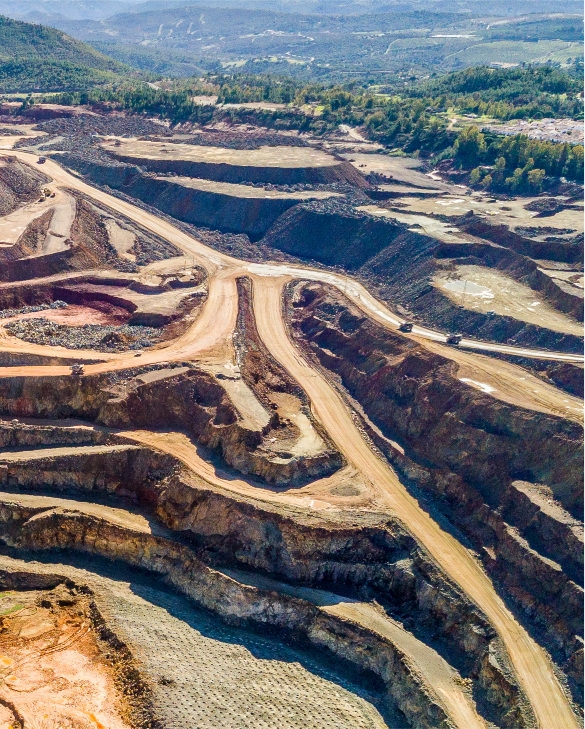A FULL RANGE OF WATER TREATMENT SOLUTIONS FOR THE MINING INDUSTRY
IDE provides advanced, effective reuse of water and wastewater for mining operations

Mining is a cornerstone of the global economy, contributing significantly to the production of essential materials used in everything from construction to consumer electronics.
Mining operations require a substantial amount of water and, in turn, produce a significant volume of contaminated wastewater. The treatment of this water is crucial, not only for operational efficiency but also to mitigate the environmental impacts associated with mining activities.
Water used in mining often becomes contaminated when rocks containing sulfidic minerals are exposed to water and oxygen, leading to the production of acidity and high concentrations of metals and sulfates. The primary types of water encountered in mining include mine drainage, process water, and storm water from industrial activities. Addressing these challenges effectively requires comprehensive treatment strategies to neutralize acidity and remove metals.
Meeting Your Mining Operation’s Water and Wastewater Treatment Needs
IDE’s solutions cater to various applications, including: makeup water, process water, metal recovery, tailings and post closure. Our solutions ensure that your wastewater operations not only meet regulatory standards but also achieve operational efficiency and environmental sustainability.
Contact an IDE Expert
Would you like more information about our technologically advanced solutions for the mining industry?












